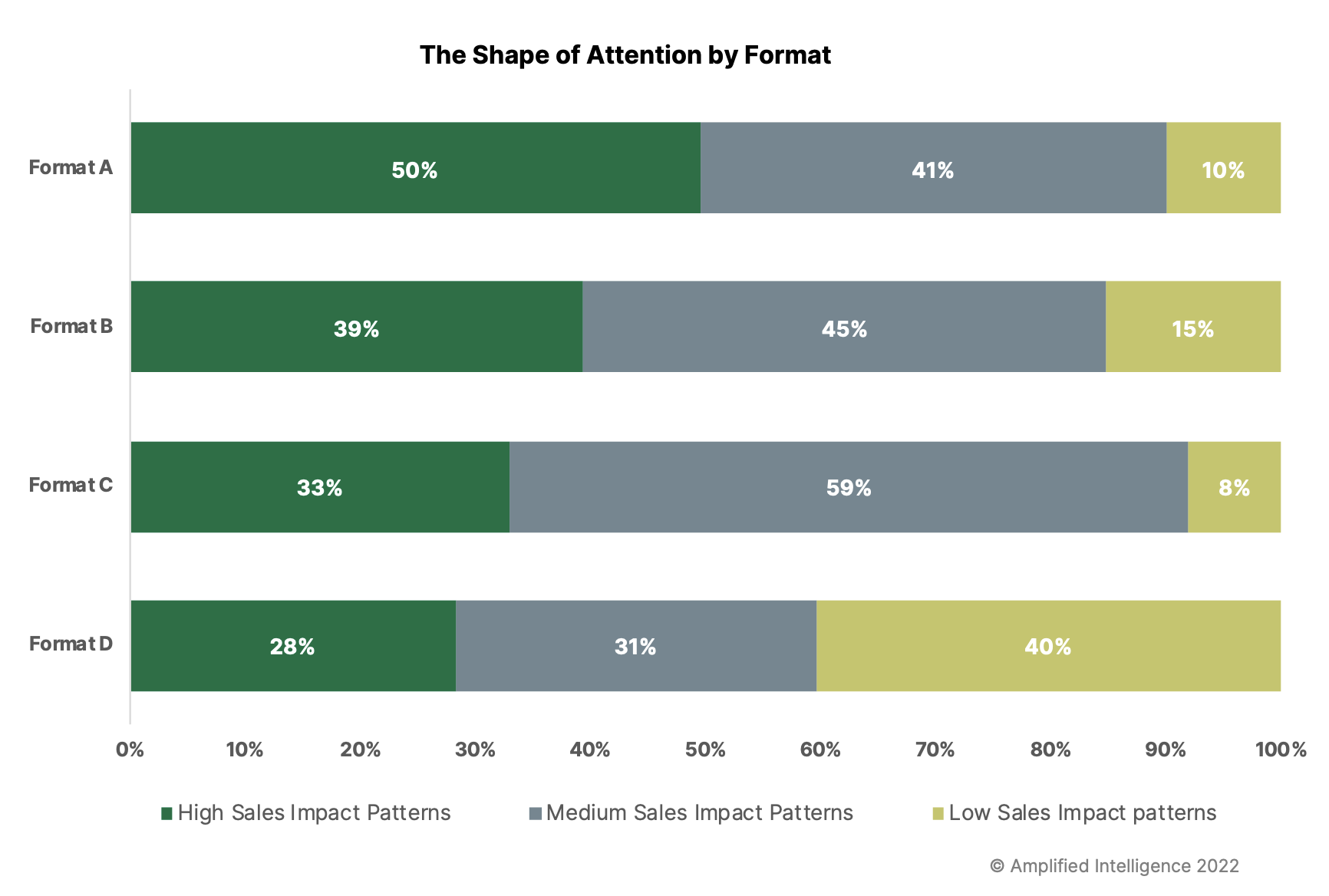The Shape of Attention is the backbone of prediction

Media Leaders
Professor Karen Nelson-Field explains there is more to active attention seconds, with more complex shapes and patterns that impact outcomes.
Putting it out there for 2022: individual level attention data are set to change the course of the attention economy. In fact, it is the only pathway to a robust currency.
In my last article I predicted that this year we will see deeper mining of attention data focusing on the richness of moment-to-moment human behaviours such as attention switching and decay patterns.
I wrote that, while the industry has put a line in the sand around the value of human attention and has established some baselines around its application, data at the individual level tells a deeper human story. A story that will help us navigate up to the next level.
I suggested that a deeper understand of attention data can help us differentiate between the type of attention needed to build a brand versus attention to refresh propensity.
Plus, it will lead us to more reliable attention predictability for trading.
To be clear: deeper does not mean more. It means exploring the depth behind what we already have.
In truth we’ve seen the clues leading to this. Over past 12 months our team have been sifting through the difficult maze of individual level data searching for clues to make attention measurement more valuable to advertisers.
And it’s time to share what lies beneath attention seconds. It will revolutionise our industry and bring us 10 steps closer to a fair and accurate currency that can be truly traded upon.
What is behind ‘attention seconds’?
Looking back at 2020/21, the writing on the wall was clear; active attention data proved to be more valuable than viewability in leading a brand to both short and long-term outcomes.
We went to market to with a simple and easy application to introduce attention as an adequate measure of media value.
We knew that (good quality) attention data is superior to viewability data, and advertisers should aim for more active attention seconds. This remains true.
But, just like humans, this data is both complicated and deep. There is more to the story.
What we have learned is that there are several systematic viewing patterns with which humans view media.
Across time, each of these patterns has a different combination of attention peaks, number of switches, shift cycles and fluctuations.
Think of it like maths, where distributions behind the mean can vary while the mean remains the same. And each pattern has a different level of impact on brand outcomes.
To illustrate, what would you expect has a stronger relationship with outcomes: a) three seconds of concentrated undivided attention, or b) six seconds of high switching which ends up as an average of three seconds?
These patterns are the Shape of Attention, and they are the backbone of prediction. They move us into the territory of visual time and mental processing.
The shape of attention provides an algorithmic description of how information is integrated over time and drives a statistically significant relationship between the pattern shape and sales impact.
Don’t panic though – we’re not throwing the ‘attention second’ baby out with the bathwater. Five seconds of active attention is still better than three seconds.
What we are saying, now that we have thrown attention under a more powerful microscope, is that the patterns give us a greater understanding of what lies beneath those seconds.
And if we are to move towards true cross-platform relativity and highly accurate predictive buying, then both attention time and attention shape need to be considered.
Different attention shapes
You can see below that each platform and format have a unique attention profile made up of different proportions of these shapes.
The example from real data below demonstrates this. It shows that five seconds on Format A will deliver a greater proportion of high sales impact viewing shapes than five seconds on Format B. And the difference between the lowest-performing shape compared to the highest performing shape is close to 60% additional sales impact.

As I’ve mentioned, the Shape of Attention combines visual time and mental processing, which is why metrics based on proprietary indexes, units, or scores are unlikely to drive much more value than advanced viewability.
They, too, are only time-based. They are missing the additional layer of human context. It’s not just what humans are watching but how we are watching.
A way to ensure attention metrics aren’t being gamed
But what does this depth of understanding really offer us?
It goes to the future of a positive attention economy, where we consider a viewer’s attention a form of generosity to be valued. We should only take what is needed. A small slice of pie is enough to satisfy our sweet tooth, we don’t need the whole thing.
It offers us a way to ensure that attention as a measure isn’t gamed. It moves the industry away from rudimentary, single snapshots based on digital estimates.
And, because it is based on individual level human attention data, it adds the context needed for prediction after the removal of the cookie. Seconds alone, even if they are true gaze-based, will be less effective at prediction than individual-level attention shapes.
The Shape of Attention is a massive leap forward in understanding how attention metrics can be used for trading media. And it’s one small step towards dispensing with the need for human surveillance in advertising.
Professor Karen Nelson-Field is a media science researcher and founder of Amplified Intelligence. Attention Revolution is a monthly column for Mediatel News in which she explores how brands can activate attention to measure online advertising as well as build a better digital ecosystem.
Media Leaders: Mediatel News’ weekly bulletin with thought leadership and analysis by the industry’s best writers and analysts.
Sign up for free to ensure you stay up to date every Wednesday.



